Dalí Theatre-Museum: A glimpse into Dalí’s mind
To look at a Salvador Dalí painting is to wonder about the mind that painted it. A visit to the Dalí Theatre-Museum in Figueres, Spain, gives visitors a chance to look into that mind.
That doesn’t mean, though, that you will understand Dalí’s thinking any more than you did going in. I certainly didn’t.
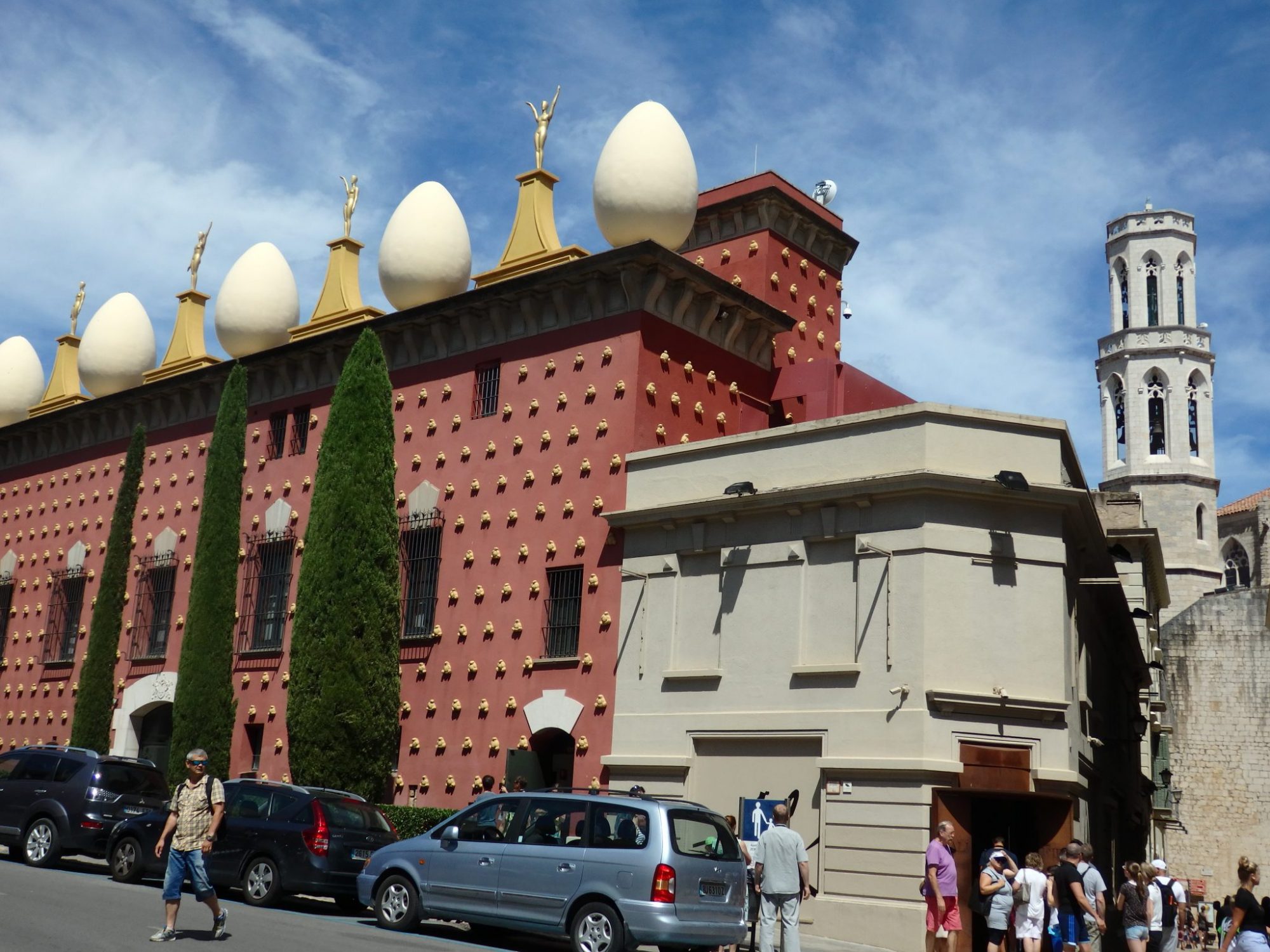
It’s called a “theatre-museum” because it was built on the ruins of a municipal theatre, and was entirely designed and decorated by Salvador Dalí himself. He certainly was a theatrical character, so this project suited him.
Wow moments in the Dalí Theatre-Museum
Entering the museum, the first “wow moment” was in the interior garden. In the middle of a small space with a few trimmed hedges stands a vintage car – a Cadillac, I think. A large naked woman wearing a Roman headdress poses stiffly on the hood. The car’s interior looks positively nightmarish: the “people” seem to have been frozen in place and time, engulfed by creeping ivy.
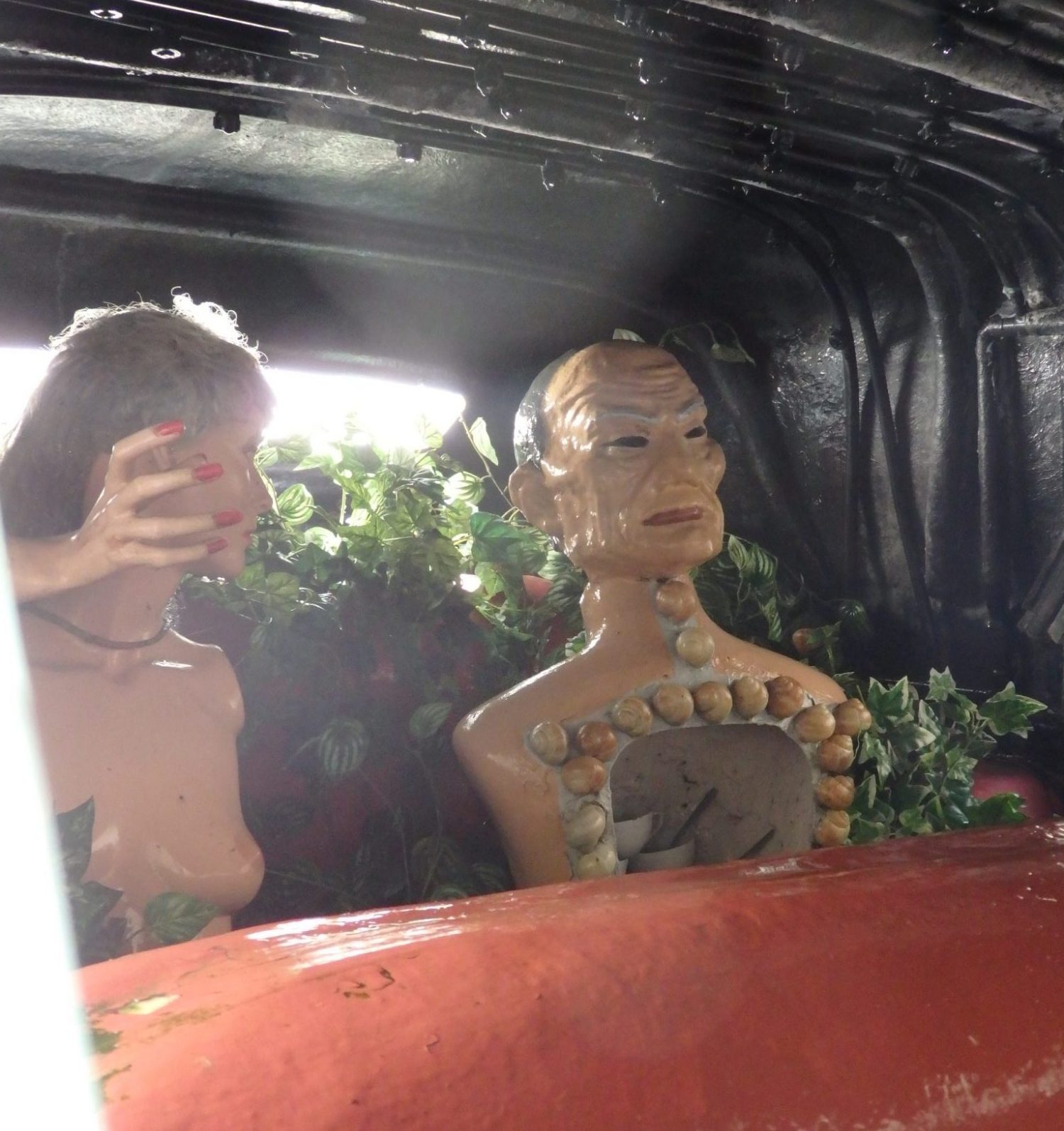
Looking around, I noticed the trunk of a palm tree (I thought), followed it up with my eyes, expecting to see palm fronds, and saw that it was topped by a large ship, about the same size as the car, hanging over me. Gold, blank-faced, naked statues looked down on me from the walls above. Nightmarish indeed. Are we above ground or under water?
The next major space is inside, and its size and complexity forced me to stop and study its details. The ceiling drew my attention first. Its references to Michelangelo’s Sistine chapel ceiling again seem to indicate nightmares, as does the enormous wall painting: a human torso, missing a face.
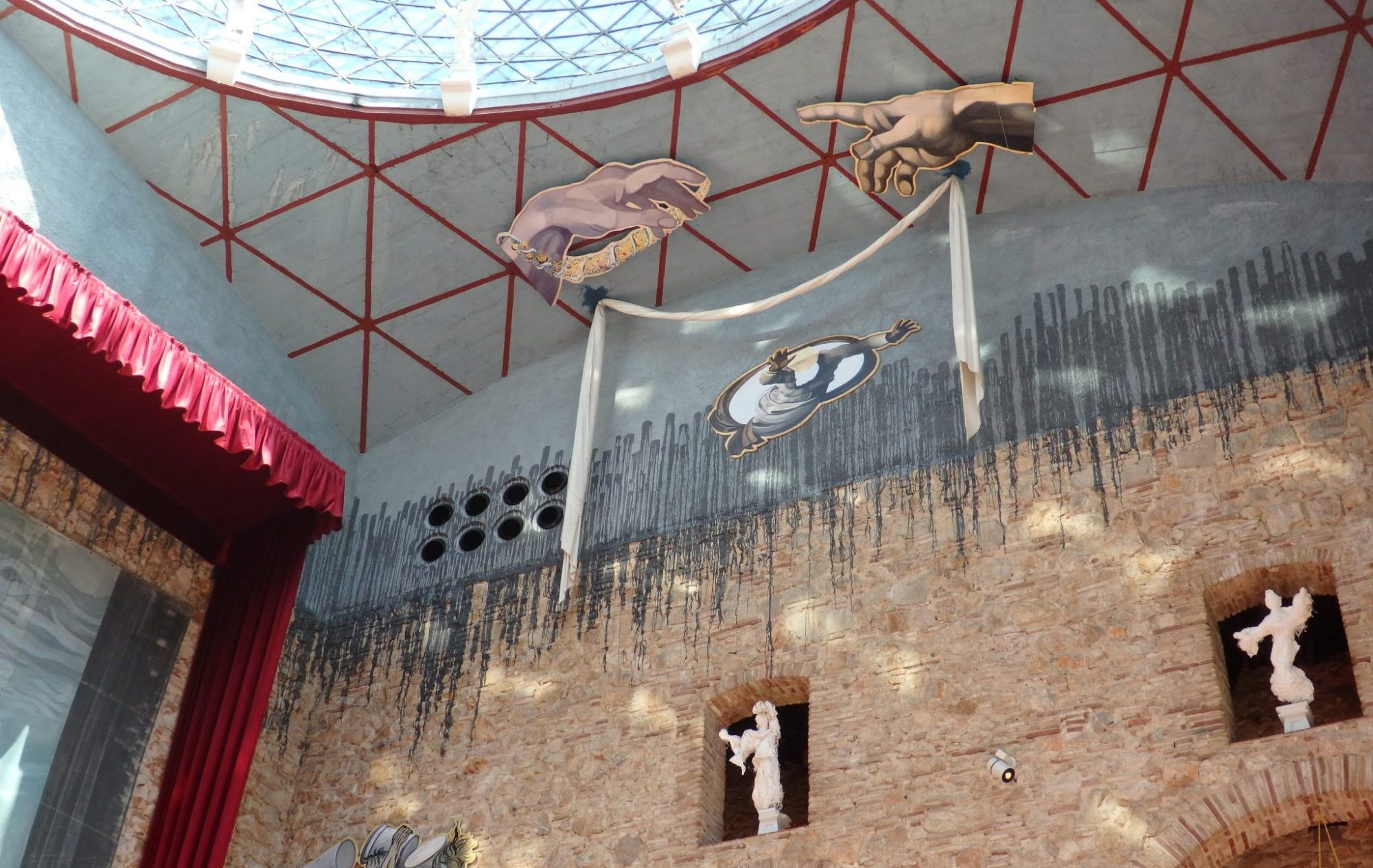
The Galleries
After those massive, immersive artworks – whole spaces in which viewers literally enter the work – the rest of the museum seemed positively tame.
Don’t get me wrong; there were plenty of surrealistic, hallucinatory images, but their smaller scale (paintings, jewelry and installations) couldn’t affect me in the visceral way those first two spaces did.
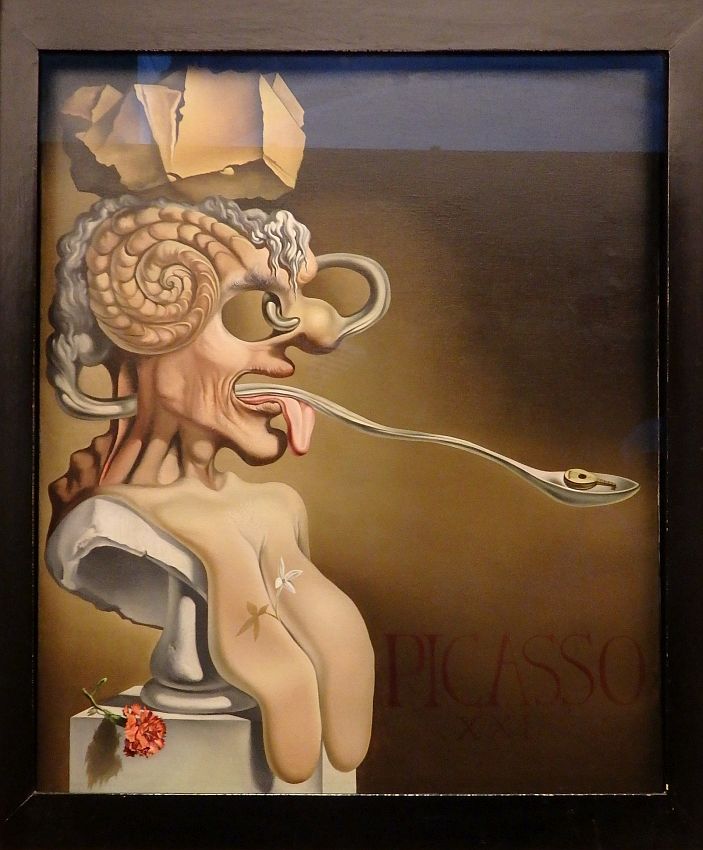
The Dalí Theatre-Museum exhibits 1500 of Dalí’s works, ranging from his early works in impressionist and cubist style to the classic surrealistic pieces he moved to later. It was all fascinating, though the small gallery rooms could have been better organized. I would have liked to see the paintings in chronological order, so that I could see Dalí’s development as a painter. Instead, the paintings are arranged haphazardly, as far as I could tell, with an early cubist painting next to a masterpiece of surrealism, for example.
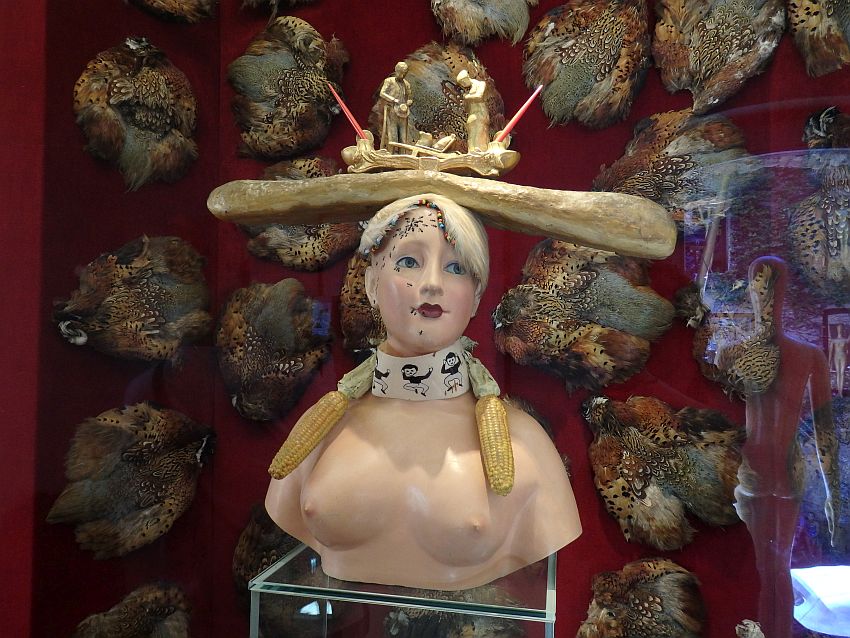
Fragmented women
One room gave another glimpse into Dalí’s mind. Entering the dimly-lit space, I could see what looked like one of his famous lip-shaped sofas in front of me. To the left, I saw a sculpture on the floor resembling huge nostrils. Above the nostrils hung a pair of abstract paintings or photographs. Dangling from the ceiling all the way to the floor were two bundled tangles of light yellow strands.
Joining the line across the room, I realized what all of this was: the line led to a small staircase up, then a small staircase down again. At the top, people were stopping to look through a large lens, down at the lip-shaped sofa.
The sofa is part of an installation called Face of Mae West Which Can Be Used as an Apartment. Again I wondered at Dalí’s mind, that could create such a thing.
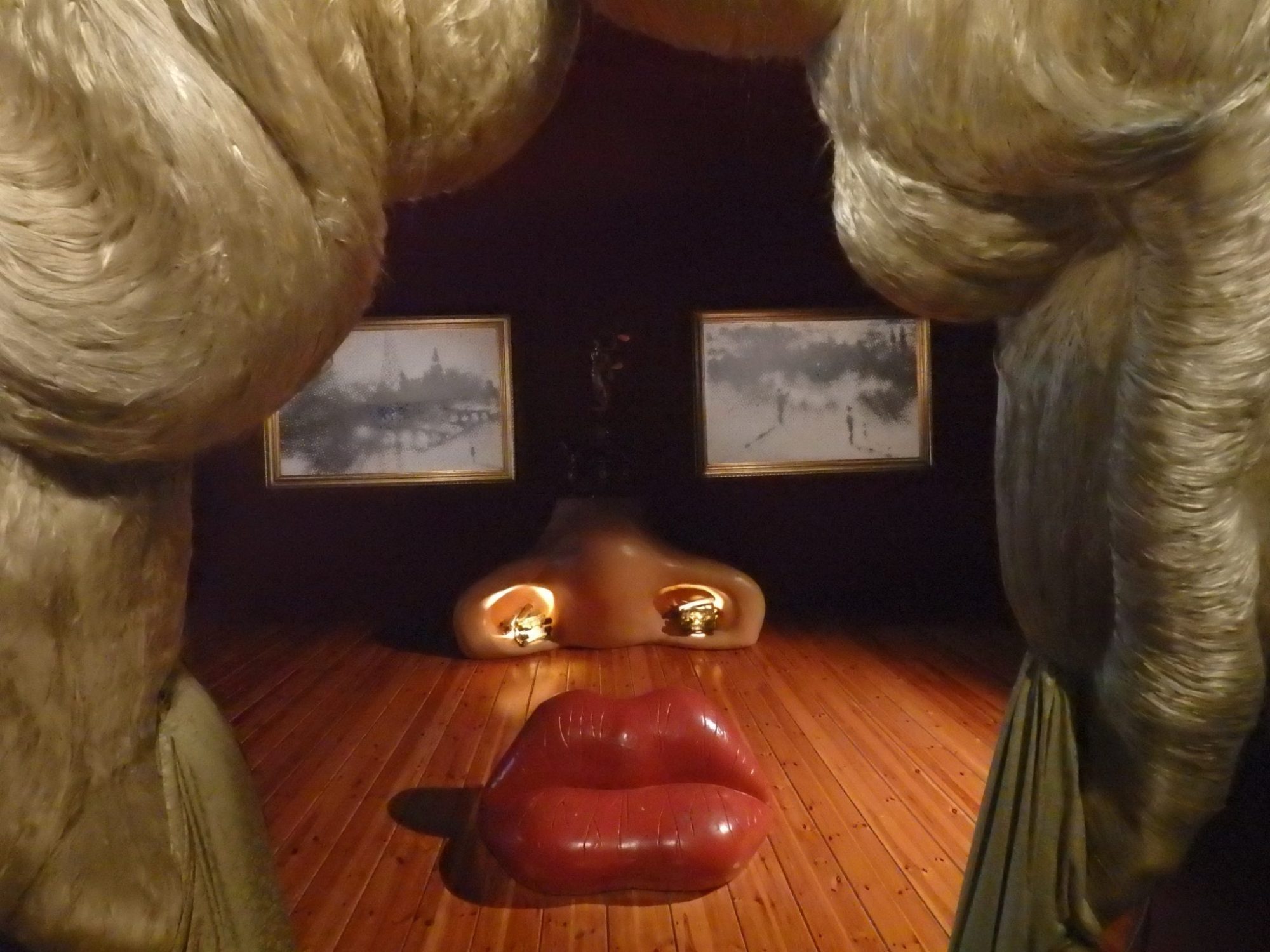
On the way to that staircase, by the way, I passed a sculpture in a glass case in a corner that seemed almost an afterthought in that room. I found it very disturbing, yet fascinating: a woman’s head, but with an ear where the nose should be, and a nose where the ear should be. What was Dalí thinking when he made that?
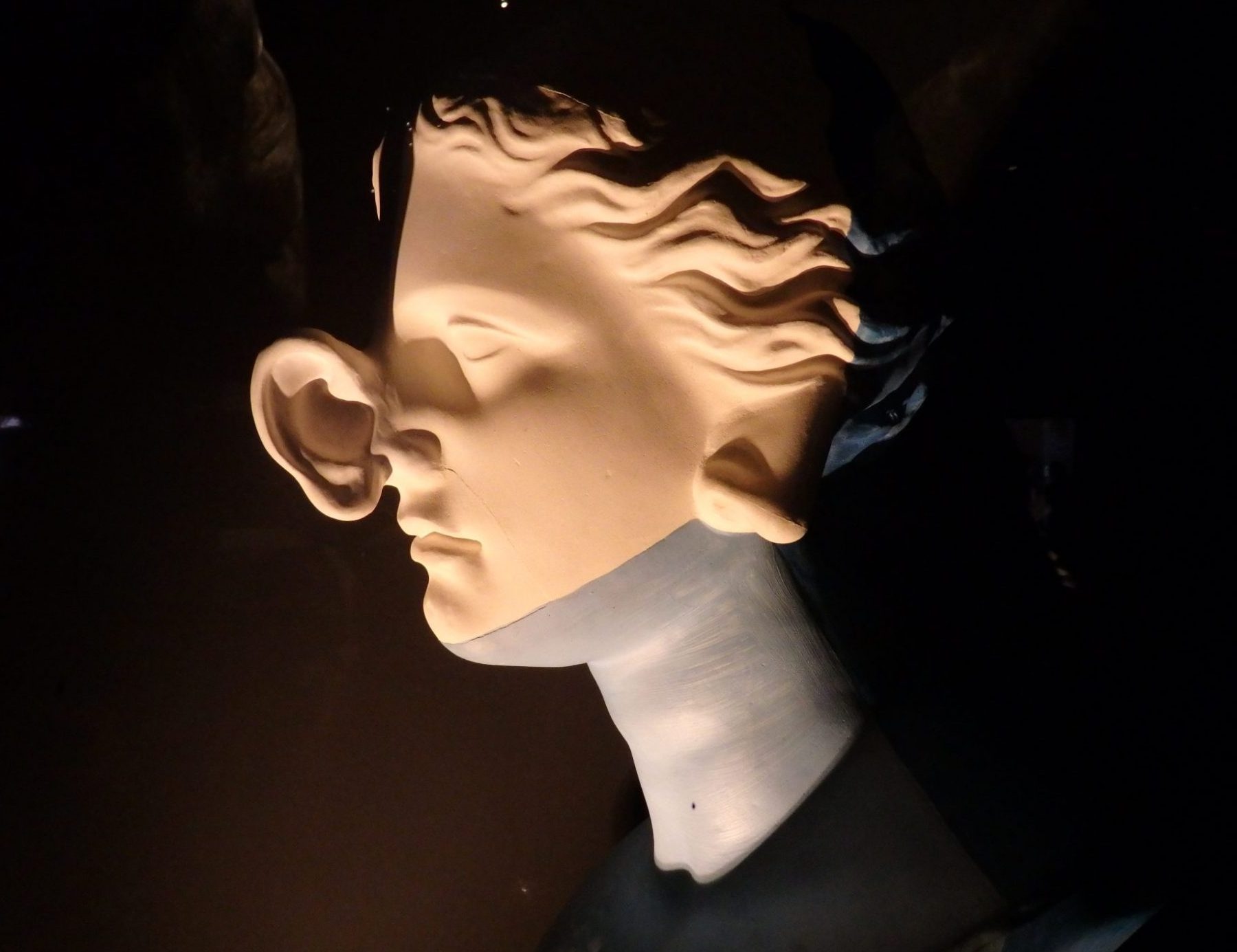
Were both of these representations of women some sort of comment on women? What was he saying? It seems to me that he reduced them to their constituent parts, rather than seeing them as whole persons. And it’s not even a positive view of those constituent parts.
At the same time, I know that he was very much in love with his wife, Gala. She didn’t treat him terribly well, though, as I learned from my visit last year to the Gala Dalí museum in Púbol. She required him to write her a letter and request permission before he could visit her. She also had a series of much younger lovers that he probably knew about. Did her treatment of him lead him to create these fragmented images?
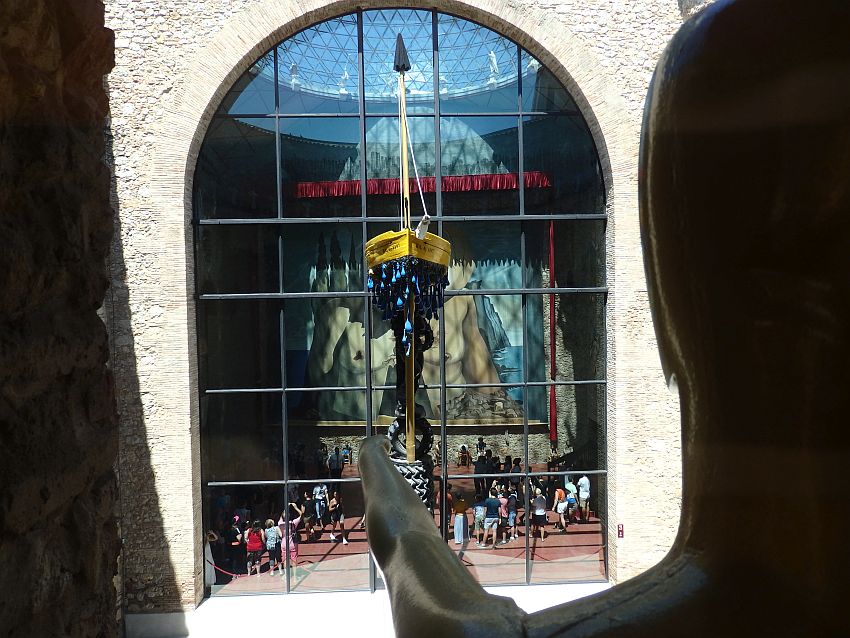
Bringing the children?
I’m generally in favor of taking kids to art museums, but not making them spend too much time in them. I’m not so sure about this one, though. For a sensitive child, some of these images might just be too nightmarish. Also, if you’re particular about your child seeing nudity, you would not be able to avoid it here.
On the other hand, a kid who doesn’t tend to nightmares would enjoy it just for the strangeness of it all. My daughter, who loved art from a young age, would have loved exploring this museum as early as five or six years old.
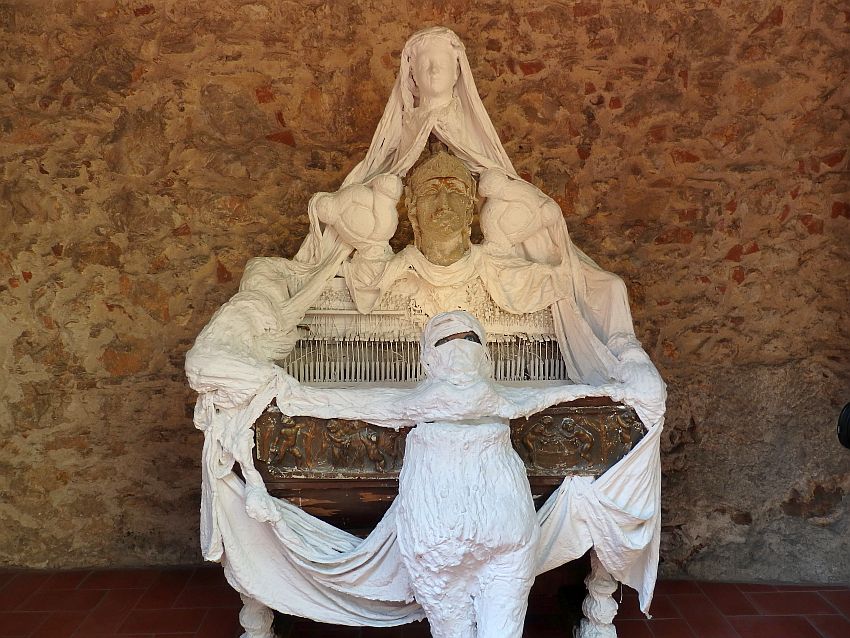
Bringing teenagers
Teenagers, however, are another story.
Besides my husband, I was traveling with three teenagers. One, a girl of 16, found it all fascinating, but felt we spent too much time in the galleries. I asked her for a review as we left the museum:
“I find weird things interesting.”
and
“It’s, like, mystery, and mystery for me is fun because I have to figure it out. Once you figure it out in art it’s, like, interesting.”
If you have a day or more to spend in Figueres, there are other things to see besides this museum. Or you might like these other articles about Spain:
The other two, boys of 14 and 18, were much less enthusiastic. After the first two bigger spaces, they just lost interest. They quickly found chairs in the big central hall and spent the rest of our visit playing on their phones.
The 14-year-old’s only comment was “I don’t like weird art.”
My son, who is 18, gave it an even harsher review:
“Art? This was the worst I’ve ever seen … horrible … disturbing … wrong.”
Of course, you could argue that Dalí’s art is successful if people find it that disturbing. Should art always be pretty? I certainly don’t think so.
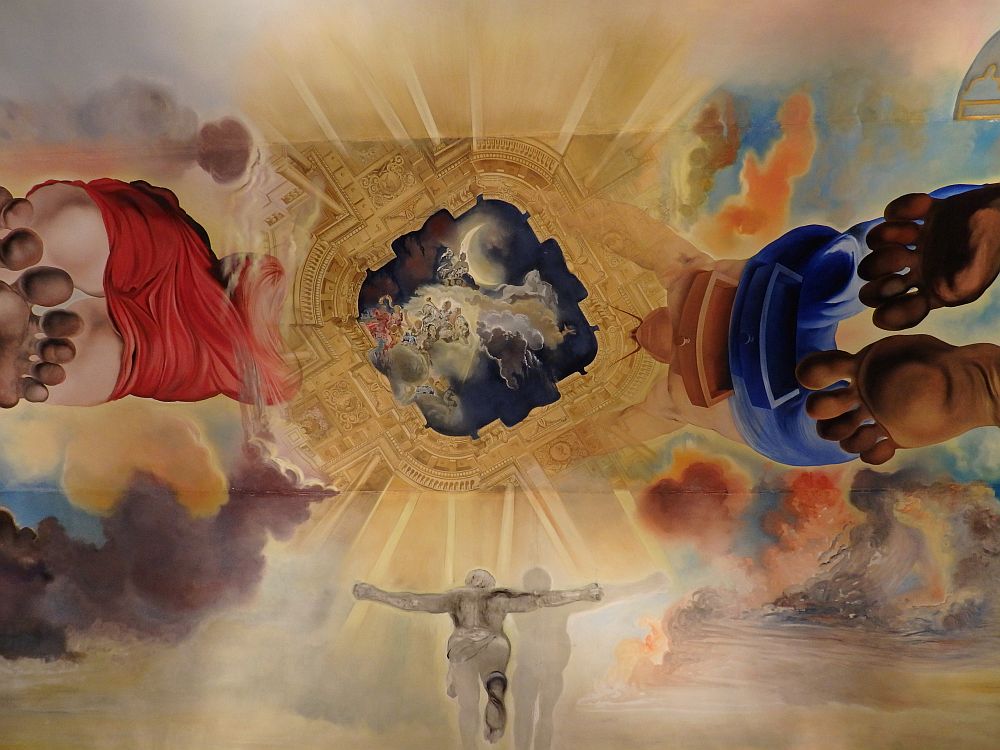
Visiting the Dalí Theatre-Museum
Dalí Theatre-Museum: Gala-Salvador Dalí Square, 5 in Figueres. Open Tuesday-Sunday 10:30-18:00 (but check ahead for any changes). Admission: Adults €14, children €9.
We did not book our tickets ahead, and that was definitely a mistake. We ended up waiting in line – in August in Spain at midday – for perhaps 45 minutes. We managed to keep ourselves entertained, but booking ahead would have allowed us a much quicker entry.
Use the form below to reserve a place on a walking tour of Dali’s Figueres, including skip-the-line tickets for the museum:
The area has three Dalí-related museums. Besides this one, you can visit the Gala Dalí Castle Museum in Púbol, in the house Dalí bought for his wife, Gala. He did all the interior design, including the furniture, and also the garden.
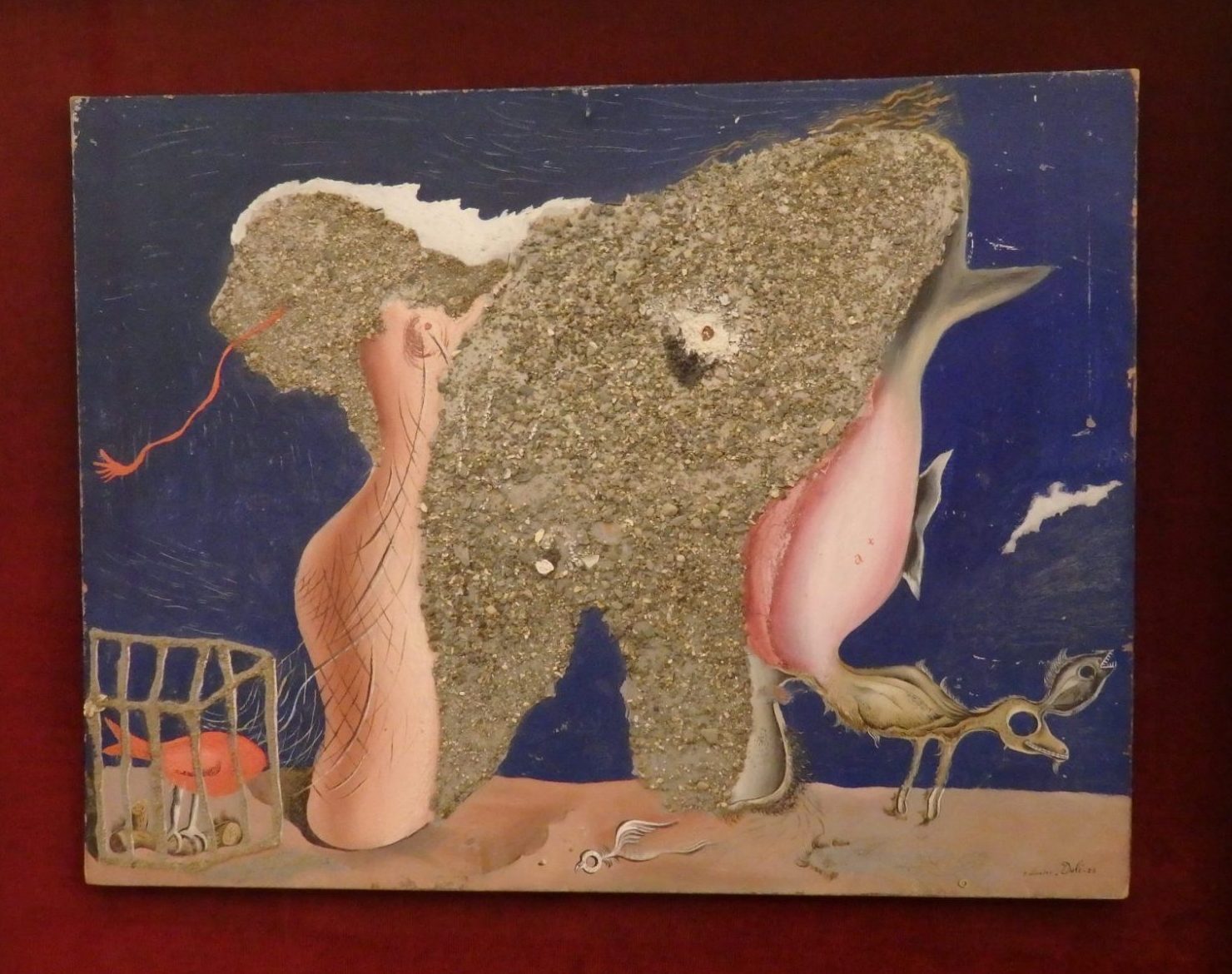
The third is the only one I haven’t been to yet: The Salvador Dalí House in Portlligat, where he lived for most of his life. You have to reserve tickets for this museum ahead of time, and I couldn’t get any when I tried a few days before we wanted to go.
Don’t try to see all three museums in one day. This man’s mind was truly bizarre, and too much insight into his mind just might affect your mind, or at least cause nightmares. In any case, driving between the three would cut into your museum time, since they’re all in different towns.
Instead, book a room somewhere nearby and take your time, dipping into his warped view of reality and back out again to enjoy the lovely Spanish countryside of the Catalonia region.
Click on the map below to book accommodations in Figueres:
Have you been to any of these museums? What did you think? Add your comment below!
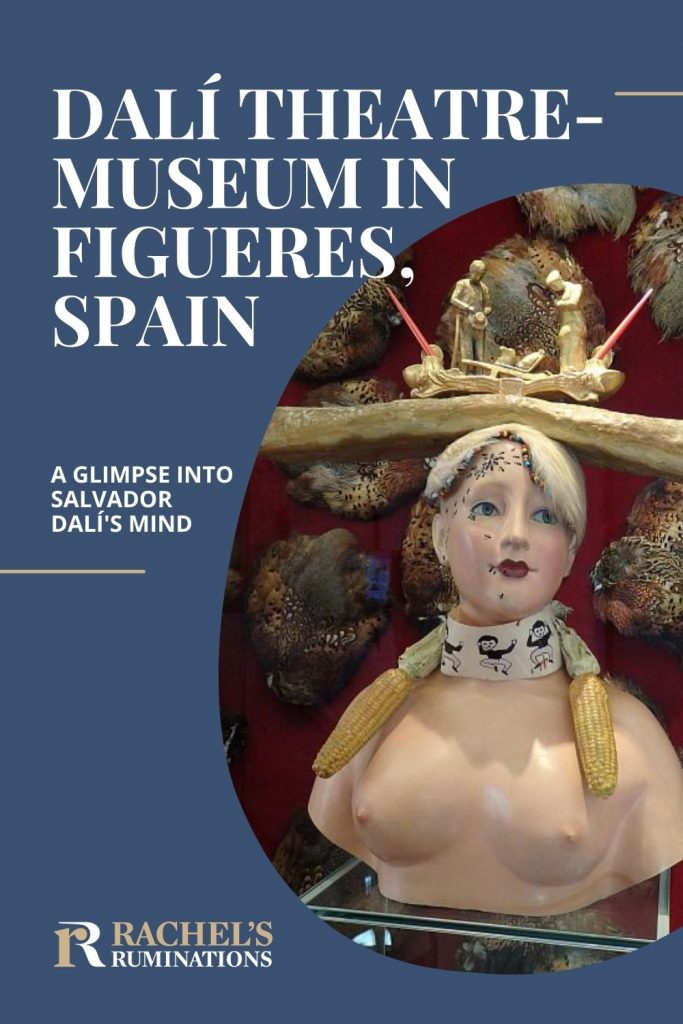
Updated June 2021.
My travel recommendations
Planning travel
- Skyscanner is where I always start my flight searches.
- Booking.com is the company I use most for finding accommodations. If you prefer, Expedia offers more or less the same.
- Discover Cars offers an easy way to compare prices from all of the major car-rental companies in one place.
- Use Viator or GetYourGuide to find walking tours, day tours, airport pickups, city cards, tickets and whatever else you need at your destination.
- Bookmundi is great when you’re looking for a longer tour of a few days to a few weeks, private or with a group, pretty much anywhere in the world. Lots of different tour companies list their tours here, so you can comparison shop.
- GetTransfer is the place to book your airport-to-hotel transfers (and vice-versa). It’s so reassuring to have this all set up and paid for ahead of time, rather than having to make decisions after a long, tiring flight!
- Buy a GoCity Pass when you’re planning to do a lot of sightseeing on a city trip. It can save you a lot on admissions to museums and other attractions in big cities like New York and Amsterdam.
Other travel-related items
- It’s really awkward to have to rely on WIFI when you travel overseas. I’ve tried several e-sim cards, and GigSky’s e-sim was the one that was easiest to activate and use. You buy it through their app and activate it when you need it. Use the code RACHEL10 to get a 10% discount!
- I’m a fan of SCOTTeVEST’s jackets and vests because when I wear one, I don’t have to carry a handbag. I feel like all my stuff is safer when I travel because it’s in inside pockets close to my body.
- I use ExpressVPN on my phone and laptop when I travel. It keeps me safe from hackers when I use public or hotel wifi.


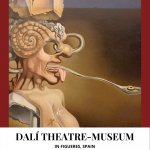


Hi Rachel! I love Dali! I was lucky enough to see an exhibit of his pencil sketches a few ago in Prague. Better than that, his work was part of an exhibit here in Seoul that I went to last week. It featured a number of his iron sculptures. They are big, weird, and wonderful. No photos were allowed. Some of his furniture was also on display. He loved those red lipped sofas. Quite a few of the furniture pieces included female anatomy. I didn’t know that his wife treated him so badly. That’s sad! He supposedly adored her. I love his work because it’s so weird and over-the-top. I agree, he’s best in small doses. His Spain museum is on my “to visit” list. Thanks for co-hosting this week. #TPThursday
I love Dali, too, but just a little at a time. Each painting needs time to take it all in. Make sure to book ahead for this one and for his house!
I like some of Dali’s works. I find others disturbing as you mentioned. I saw some of his paintings at the Reina Sofia Museum in Madrid. Have to say they were very interesting and popular. They were surrounded by tons of people. Some girls were even taking selfies with the paintings.
I’ll never understand that selfie urge. Is it just to prove you were there?
Hi Rachel,
I wished I had more time to visit the Dali Museum when I went to Figueres, especially after reading your article and seeing all the great images. Unfortunately, I only got to see the statue of Dali. Well, better luck next time. X, Mina
Oh too bad! Next time! But get your tickets ahead of time!
Love the May West exhibit. Crazy
Me too! I never thought of that sofa as anything but a sofa!
I love Dali and his bonkers imagination. I was sofa shopping recently and came across one that reminded me of the Mãe West room. Great stuff, and I second the recommendation for visiting his home if possible. Well worth it.
I think if Dali’s work seems too much, the Gala Dali museum is less intense: a sort of “Dali Light”. I’ll go to his home museum next time I’m in the area. That sofa, by the way, may look cool, but it wouldn’t be particularly comfortable, would it? It has no arms to lean on!
Oh this is magnificent, MAGNIFICENT! How quirky and out of this world! It’s worth visiting Figueres just to see this. Thanks for sharing this, I love it!
Definitely worth a making a special trip!
Dali is one of those artists my students love or hate–no middle graound. I would love to visit this museum. So glad you shared it with us!
Well, I love Dali’s work, though I don’t think I’d hang any in my home. Too nightmare-inducing!
Oh, wow! I hope they warn people not to attend the Dali Museum if they’ve taken any drugs!!! I can see people who are high on something really freaking out at some of those exhibits! I would really enjoy a visit to this art museum. Thx for sharing, Rachel.
Glad you liked it, Doreen! And, yes, serious bad trips would happen!
I’ve been to the Dalí Theatre Museum and found it fascinating, disturbing at times and exhausting. Each piece of work could be examined and studied at length. I certainly agree his work makes you wonder about the man who created it. I was impressed with how many styles of art he worked in.
Yes, so was I. I never knew he’d had a cubist period, for example. Only his surrealist paintings seem to be well-known. You’re right that each piece could be examined at length. With 3 teens in tow, that wasn’t really a possibility for us.
There sure do seem to be a lot of Dali Museums in the world! I wonder how many exactly. Anyway, they certainly aren’t boring. I enjoyed visiting the Dali Theatre-Museum with you and imagine I might never actually get there in person.
Well, if you’re ever in, say, Barcelona or Girona, it’s not too far away.
I love Dali, too. I’ve never been to the museums in Spain, but I have been to the Dali Museum in St. Petersburg. Florida. It’s home of the largest collection of Dali paintings outside of Spain. it’s the entire collection of a couple who became fans of his work early in his career. They collection is well curated and helps you understand his work, which was never pointless.it’s worth the trip if you are in Florida, which is mainly devoid of artistic culture.
On a side note, don’t feel sorry for Dali. Gala!s house was a gift from Dali and according to himself, she had to agree that he would only be allowed to visit by invitation it’s so Dali, mental flagellation
Interesting! They present it completely the other way around at the museum! I’d love to check out that Dali museum in St. Petersburg if I ever get back to Florida.
Always been a big fan of Dali, and absolutely love that quote at the top. Definitely sums up trying to absorb his work.
Thanks! It’s how I felt too!
I had been to the museum years ago so your photos and text brought back nice memories…although while no lines to enter, I do remember it being very crowded when we visited.
Yes, it was crowded inside too. It only felt like a problem though with one inconsiderate tour guide who stopped in narrow places to talk, preventing anyone else from passing through till she was done. And she talked at length. Very irritating. But other than her group it wasn’t a problem.
I’ve been to that museum, and yes, it’s surreal, but I found it more benign, or at least my memory of the Dali Museum at Figueres is of something less scary than it may have felt at the time.
I think the organic shapes of eggs and bread on the outside set a kind of domestic tone but inside, well, it is like being in a dream. Much as you describe, in fact!
I couldn’t figure out any connections between the different images: the bread, the gaping stomachs, the deep-sea diver … no idea!
This was fascinating to me! I never knew that Dali did sculptures…They are so weird and just so mind blowing.
I think art is not always meant to be pretty and decorative but rather to evoke an emotional response. That to me is the power of art. And these works certainly do that.
Generally if teens have been exposed to art galleries as young children they will be more prone to being interested in them as teens, in my experience. But I guess it is also very oersonal. Many adults don’t like museums either!
Terrific post.
Peta
I am glad you enjoyed it! Two of the teens on this trip are foster kids (Syrian refugees), so I take no responsibility for their early exposure to art. My son, however, has been exposed to art from a young age, whenever we travel, but has never shown even the tiniest amount of interest. My daughter (who was not on this trip) was raised the same way and loved it. But it has to do with personality: he plans to become a biologist; she’s studying to be a graphic designer.
I love this museum, outside and in–weird, wacky, wonderful Dali! Thanks for including so many images, they brought my visit of a few years ago back to me. I’ve not been to the two others you mention though, but they are definitely on my list.
Glad you liked it, Anita!